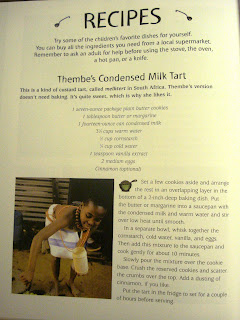
Illinois Learning Standards

1. As a whole class, students will make predictions about the content of the book based on their reading of the texts and images in the contents page. The teacher will elicit the students’ predictions with general questions about their previous geographical and social knowledge of the countries and peoples involved.

Illinois Learning Standards
Items needed
 Access to MyPyramid.gov.
Access to MyPyramid.gov.Copies of Hollyer, B. (2003). Let’s eat. What children eat around the world. New York: Henry Holt in association with Oxfam. (IMC 394.1 H746L).
Colored construction paper, colored markers, crayons, pencils.
Activity
Learning Center 3 (of 3). Jalapeno Bagels.
Reading. Presenting. Writing.

Illinois State Standards
1. A. Apply word analysis and vocabulary skills to comprehend selections.
1. B. Apply reading strategies to improve understanding and fluency.
1.C. Comprehend a broad range of reading materials.
4. B. Speak effectively using language appropriate to the situation and audience.
5. A. Locate, organize, and use information from various sources to answer questions, solve problems and communicate ideas.
5. C. Apply acquired information, concepts and ideas to communicate in a variety of formats.
Items needed
Copies of Wing, N. (1996). Jalapeno Bagels. New York: Atheneum Books for Young Readers. (IMC EW769j)
Paper, pens.
Activity
1. As a whole class, students will make predictions on the content of the book based on its title and cover. The teacher will jot down all their suggestions on the blackboard so as to come back to them later, once they book will have been read. Then, the teacher will read the first passage of the book aloud (p. 3) and will ask the students to refine their guesses. Their new ideas will also be written down on the blackboard. Ideally, the teacher will guide them to the idea that the may problem in the book lies in the statement “My teacher told us to bring something from our culture.” On the basis of the material on the blackboard, the students will be asked to produce reader generated questions (RGQs) which, this time, will not be induced by the teacher.
2. Looking for answers to the questions they will have produced, students will read pp. 4 to 16 of the book in pairs. After that, they will be asked to make groups of four and discuss their answers. A class discussion will ensue in which they will retell the events in the story and check out their guesses. The teacher will explain why certain guesses where more appropriate than others and why some might not be plausible at all. Ideas about the structure of the story will be elicited. Based on that structure, the teacher will make a list on the blackboard containing all the bread items mentioned in the text (i. e. pan dulce, empanadas de calabaza, chango bars, bagels, challah, sesame-seed bagels, and jalapeno bagels). Students will be asked to describe each one of these items briefly. They will be advised to refer for help to the glossary on p. 21. Finally, they will be asked to predict the end of the story and their guesses will be jot down on the blackboard.
3. Students will be asked to form pairs different form the ones they have formed at the beginning of the lesson and they will read the end of the story. By the time they have finished, the teacher will have written on the blackboard the final passage of the book “Why Jalapeno bagels? -asked Papa. Because they are a mixture of both of you. Just like me!” He or she will ask the students to explain the meaning and moral of the story tracing back to the content of the story, i. e. the different bread items belonging in the Mexican and Yiddish cultures. As a way of connecting this learning centre to the previous ones, the teacher may ask the students questions about the food groups the items mentioned in the story belonged in and about their nutrition and health facts (Learning Center 2) or to spot the cultures where the parents in the story come from in a world map and make connections with the food produced in those regions (Learning Center 1).

4. Something from your culture. As a final step, the teacher will ask the students to brainstorm ideas to describe food items from which they consider to be “from their culture” and they will produce an outline of a writing/photograph/recipe/story project to be presented on the following class. That class will probably start with a vocabulary activity in which students will have to match the names of the different dishes learnt in this lesson to their corresponding descriptions. Ideas about the cultural globalization of food may be introduced on a subsequent class as well.

No comments:
Post a Comment